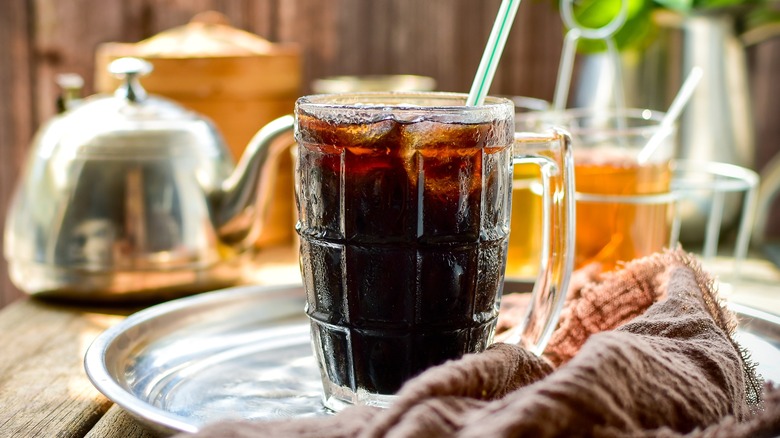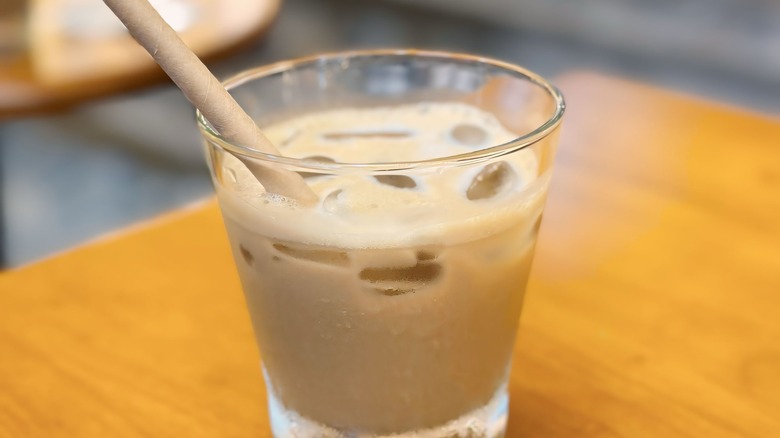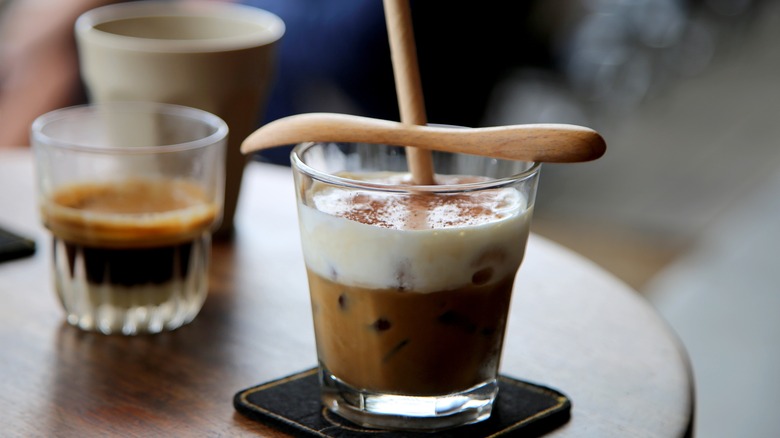What's The Difference Between Vietnamese And Thai Iced Coffee?
Southeast Asia is no stranger to wonderful cuisine. From the phenomenally underrated Burmese tea leaf salad to the complex and irresistible flavor profile of Vietnamese pho and the wonderful coconut milk, peanut, and basil flavors present in Thai cuisine, Southeast Asia brings a killer fastball to the culinary world. But while many of these cuisines are well-regarded for their food, they're just as creative and unique when it comes to drinks. Take, for example, Vietnamese iced coffee versus Thai iced coffee.
The more widely-known Thai beverage is probably Thai iced tea, made of a mixture of Ceylon black tea, condensed milk, evaporated milk, sugar, and (possibly) spices. But Thai iced coffee is just as much of a big deal in its respective country — as is Vietnamese iced coffee in Vietnam. While the two are both iced coffee and clearly in the same category of drinks, there are also notable differences between them, specifically in the types of beans used, divergent filtering processes, and the ingredients added to the finished product.
They use totally different coffee bean blends
The single biggest difference between Thai and Vietnamese iced coffee is the beans. Vietnamese iced coffee focuses on one specific type of coffee bean: robusta. Robusta beans, from the coffea canephora plant, are commonly used in things like espresso and instant coffee. This makes sense because robusta beans tend to be extremely bitter and are considered significantly stronger than arabica beans — the other major type of coffee beans on the market. The most important thing here is that Vietnamese iced coffee uses ground beans with no additives. This isn't surprising, as Vietnam is one of the top coffee producers in the world, and it's known for its robusta.
Thai iced coffee, by contrast, can use either robusta or arabica beans — the latter has become more common over time as arabica production has ramped up in Thailand. More importantly, though, the coffee blend utilized by Thai iced coffee typically includes ingredients like corn, cardamom, soybeans, and sesame. The end result is a less bitter coffee with a more complex blend of flavors, not to mention — one you can't find anywhere else in the world.
They are filtered in their own ways and have different add-ins
Another dissimilarity is the brewing methods of Thai and Vietnamese iced coffee. The two use totally different filters, with subtle but significant effects on the end product. Vietnamese iced coffee makes use of metal "phin" filters, kind of like a French press, which allows extreme control over coffee bean agitation and water temperature. Thai iced coffee, conversely, utilizes a muslin "tungdtom" drip filter with a quicker drip that filters out the bitterness and acidity relative to its Vietnamese cousin.
Interestingly, while Vietnamese iced coffee is typically more bitter than Thai iced coffee naturally, it's sweeter when combined with its add-in. Vietnamese iced coffee is most commonly served with sweetened condensed milk, creating a bold contrast between sweet and bitter flavors. Thai iced coffee, on the other hand, will use any number of sweetening options, from milk and sugar to sweetened condensed milk, evaporated milk, and sugar syrup. There are, of course, individual variants, too, such as the Vietnamese sua chua cafe, a beverage of iced coffee and yogurt.
Though both Thai iced coffee and Vietnamese iced coffee come from Southeast Asia, you shouldn't confuse the two. Both have bold yet distinct flavors that coffee lovers will likely find enjoyment in.


